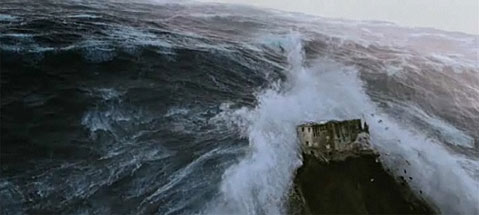The End is Not Yet
On the AV forum, full-pret Dave asks a good question:
“Since your view distinguishes between the parousia of AD70 and a future return of Christ at ‘the end’, when Christ and the apostles taught about the ‘Second Coming’ (yet to occur), what did they call that event?”
I follow the full-preterist interpretation of passages that are very obviously imminent. As Travis Finley recently pointed out on the BH list, both 1 Thessalonians 5 and Matthew 24 refer to the first century parousia as Jesus coming like a thief. The “thief” references in Revelation also refer to this first century event. What’s the solution?
“The end” the apostles looked forward to was the end of the Old Covenant. It was the first resurrection.
“The end” we now look forward to is the end of the New Covenant. It will be the second resurrection.
AD30 to AD70 was the overlap between the two Covenants. It was a bridge for the faithful of the Old to enter the New. The Lord always establishes a new house before He destroys the old (Joseph/Jacob, David/Saul, Temple/Tabernacle, Daniel/Zedekiah).
Simple.
___________________________________________
See The First Resurrection, The Second Death, Three Resurrections – 1, Three Resurrections – 2, Three Resurrections – 3, Three Resurrections – 4, Jesus’ New Broom, Big Government and Trinitarian Judgments. Feel free to post any questions or objections in comments. I’m up for it if you are.



























December 22nd, 2009 at 1:39 pm
Mike,
Is there any way to keep the millennium in the 1st C but still expect the close of the New Age? I just don’t see a good reason to put the Battle of the Amalekites (Rev 20) in the future for us. It seems that all of Rev is 1st C except for the 1000yrs and that hermeneutic just don’t jive with me.
December 22nd, 2009 at 1:53 pm
Hi Travis
A white horse begins the gospel process in the Land. Once the Land is conquered, a white horse again begins the process, but in the world (Rev 19). This time Jesus rides with the saints on white horses. It is Totus Christus.
What follows is a summary of events in the kingdom of Christ.
Satan’s binding is the same as the “binding” of the wicked woman in Zechariah 5. He is put under a lid and exiled until the harvest comes to the full. When released, as the woman was (she is the harlot in Revelation), he is allowed by Jesus to fill up his sins. This brings on another resurrection, the second one.
Jordan commented somewhere that we don’t have a huge commentary on the 1st century destruction of Jerusalem because we already have the one under Babylon. I think we also don’t need a huge commentary on the end of the world because we have its little sister in the first century judgment.
The thousand years is not an arbitrary symbol. See:
http://www.bullartistry.com.au/wp/2009/11/07/for-a-thousand-years/
Also, the structure of the Revelation supports a future judgment. You will see this as you get through Totus Christus.
Thanks for the comment.
December 22nd, 2009 at 1:57 pm
When should TC arrive, then?
December 22nd, 2009 at 2:08 pm
Posted early last week, so should be any day now.
April 17th, 2010 at 10:12 am
Thanks for the reply Mike. Didn’t notice it until today. Would you say that all uses of “Parousia” refer to the AD70 coming of the Lord, or are some (like Paul’s 2nd letter to the Thess) changing to the future event? Would Paul use the same phrase to speak of 2 very different events? Would you say ‘erchomai’ is used interchangably with ‘parousai’?
Thanks Mike.
Dave
April 17th, 2010 at 10:21 am
Hi Dave
2 Thess to me is undeniably imminent. The debate was about whether it was present, not whether it was near. So I think most or all of the references to the parousia concerned AD70. That was the next event on the agenda.
Same goes for erchomai. We’re not going to get any definite answers from putting the Greek words under the microscope. The real answer is structural.
The AD70 judgment completed the first century “Feasts” pattern. The final judgment completes the same sort of structure, but one that covers the entire Bible. Revelation 20 is very clear that there are two resurrections. I believe neither is “spiritual.” Paul is one of those saints currently living and reigning with Christ.